For American consumers, online shopping has become the norm. Take a quick inventory of the most recent purchases you’ve made. Chances are that many of these items were purchased online. Some consumers are even turning to online stores to fulfill orders for grocery items, cosmetics, and pet food.
If you’re a business owner, you might also be seeking new ways to engage your customer base through online shopping. We’re here to help you hone your approach. In this guide, we’ll examine the state of online shopping in the United States so that you can optimize your business for today’s digital landscape.
Quick Key Facts about Online Shopping in the USA
What should you know about online shopping and consumer behavior? This page will cover findings such as:
We’ll explore these statistics in greater detail below and highlight some of the ways your business can adapt to these trends.
How Big Is Online Shopping in the USA?
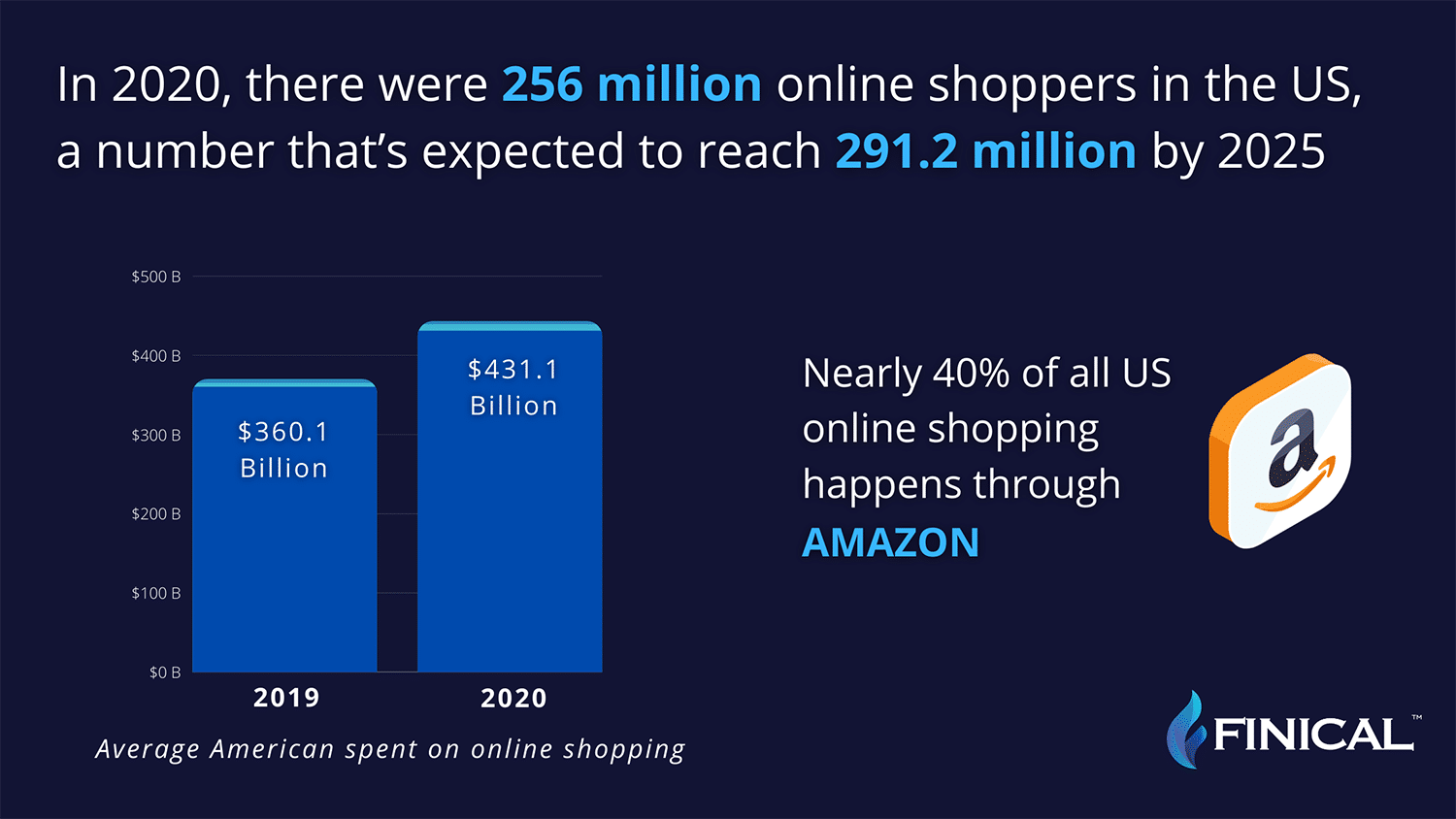
Online shopping is a global phenomenon and it’s expected to reach $4.2 trillion annually by the end of 2021. This means that the profits of online retail are larger than Germany’s GDP!
Globally, there are 2.14 billion online shoppers, representing just over a quarter (27.6%) of the total global population. For Americans in particular, online retail is a major source of revenue. In 2019, Americans spent $360.1 billion on eCommerce transactions. In 2020, they spent $431.1 billion, an increase of roughly 20%.
In 2020, there were 256 million online shoppers in the US, a number that’s expected to reach 291.2 million by 2025. Naturally, much of this eCommerce is due to the success of Amazon.com. Nearly 40% of all U.S. online transactions happen through this online merchant, with projections to reach $3.6 billion in revenue as 2021 comes to a close.
By the end of 2021, 83.2% of all online sales of books, music, and movies are expected to occur through Amazon.com. But part of what’s fueling their recent success is the rise of food and beverage purchases through the eCommerce giant, with one 2021 poll revealing that 36% of Americans prefer to order groceries online.
Online Shopping Trends vs In-Store Retail Shopping Trends – How They Have Changed Over the Last 5 Years
According to the U.S. Census Bureau, online retail made up 12.5% of total retail sales when measured in terms of value during the second quarter of 2021. This means that for every $100 spent in America, $12 was spent online.
This figure may seem small, but it doesn’t entirely tell the story of how eCommerce is impacting the retail industry as a whole.
Interestingly, there hasn’t been much change in consumer preferences in recent years. A 2018 poll discovered that 56% of Americans actually preferred shopping in a physical store, while a separate 2021 poll found that 54.5% of Americans still prefer shopping in person.
But even if Americans claim to prefer visiting a physical store, this data doesn’t account for the convenience factor of online shopping. In the 2018 poll, for example, roughly 60% of respondents indicated that they liked the convenience of being able to find what they needed without having to go to a store.
Additionally, one survey discovered that 63% of retail shopping begins online. Even when a customer comes to a store to make a final purchase, that purchase is the result of research and price comparisons that started with an online search.
How Often Do People Do Online Shopping in the USA?
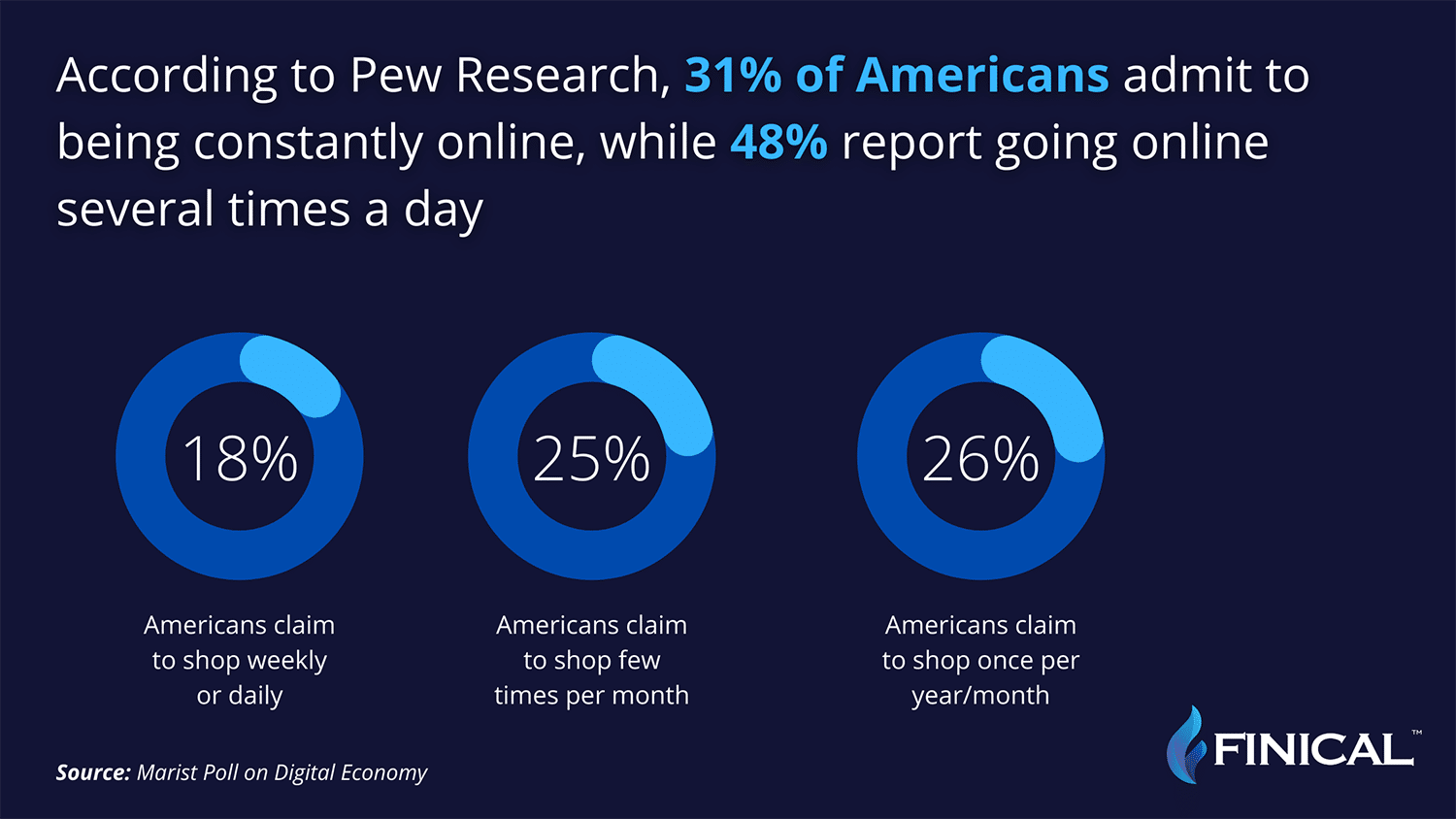
The impact of the internet on daily life cannot be overstated. According to Pew Research, 31% of Americans admit to being “constantly online,” while 48% report going online “several times a day.”
This helps to explain why 76% of Americans are online shoppers and 62% claim to be “regular” online shoppers, which means that they make an online purchase more often than once per month.
However, this same poll revealed that only 18% of Americans claim to shop weekly or daily. Roughly 25% of survey respondents indicated that they shop online a few times per month, while another 26% shop online anywhere from once per year to once per month.
At the same time, the overwhelming number of online options can actually work against some retailers. In a 2019 survey from Episerver, 46% of customers failed to complete an online transaction because there were too many options to choose from.
Still, others have failed to complete a transaction due to high costs or the need to create a merchant-specific account.
Despite the popularity of online retail, many merchants have some wrinkles to smooth out in the buying process to maximize customer satisfaction.
How Much Has Online Shopping Increased After COVID-19?
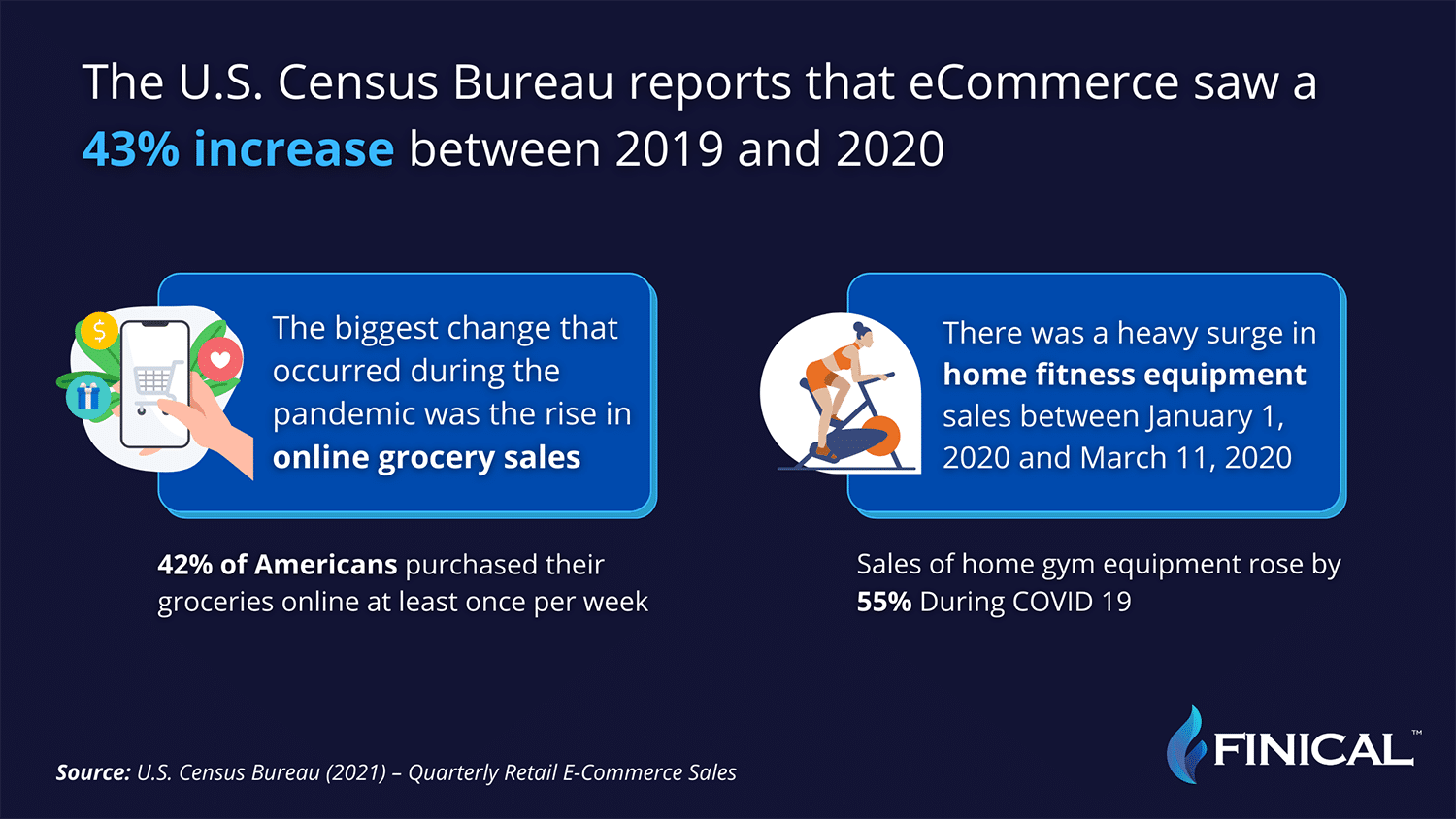
During the 2020 pandemic, online shopping became less about convenience and more a matter of public health. The U.S. Census Bureau reports that eCommerce saw a 43% increase between 2019 and 2020, almost certainly the result of nationwide lockdowns.
Online retailers were not immune to panic-buying, with sales of toilet paper, hand sanitizer, and over-the-counter cold and flu remedies temporarily skyrocketing. Additionally, with gyms and health clubs closed down, the sales of home gym equipment rose by 55%.
The biggest change that occurred during the pandemic was the rise in online grocery sales. A 2020 survey from Geekwire showed that 42% of Americans purchased their groceries online at least once per week.
COVID, therefore, represents something of an inflection point for American consumers. The Census Bureau reports that eCommerce growth normalized to a modest 9% growth from 2020 to 2021, but for many online shoppers, their behavior has been permanently altered.
Consumers who grew accustomed to online grocery shopping have now made it a regular practice. Amazon reports that online grocery orders have increased as much as 50 times.
Similarly, the growth of pet supply companies like Chewy.com has made it easier for consumers to restock on vital supplies.
What Demographic/Age Group Does the Most Online Shopping?
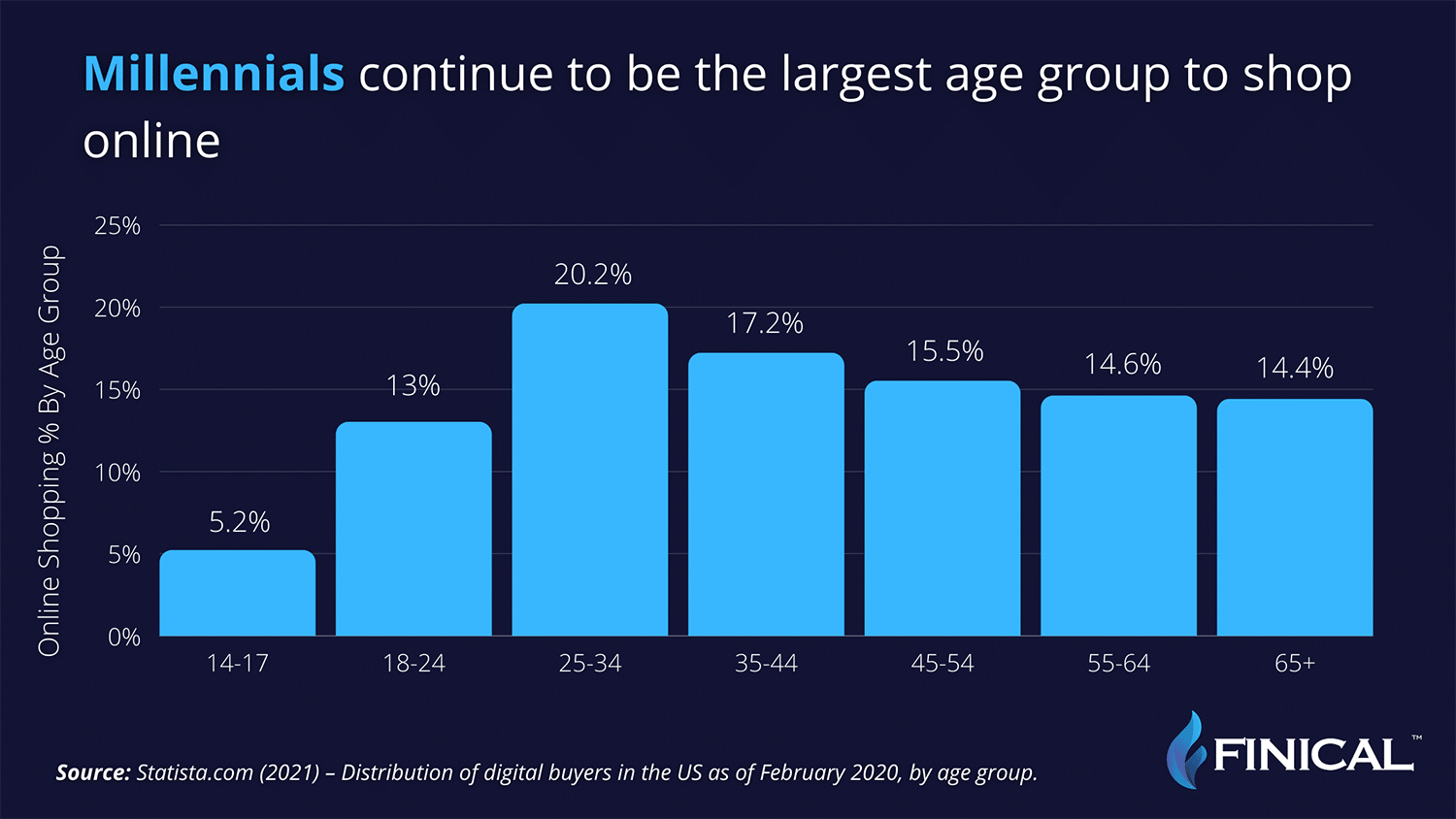
Unsurprisingly, online shoppers tend to be young. According to a 2018 Marist poll, 33% of Americans 45 and older had never purchased anything online, but 56% of Americans 30 to 44 made online purchases more frequently than once per month.
Millennials continue to be the largest age group to use online shopping, with 20.2% of online shoppers falling between the ages of 25 to 34 and another 17.2% of online shoppers between the ages of 35 to 44.
According to a 2019 survey, millennials (aged 22 to 37) made 60% of their purchases online. Millennial consumers said that they preferred online shopping due to the ability to easily compare prices and look for discounts and coupons.
What might be particularly surprising is the way that people engage with products and brands online. Social media now plays a major role in purchasing decisions, with 54% of adults ages 25-34 having shopped on social media before, and another 20% expressing interest in doing so.
This reveals that younger generations are more easily influenced by social media than traditional advertising. Retailers will have to continue to engage the digital world to meet the needs and tastes of the upcoming generations.
Most Popular Devices for Online Shopping
As much as smartphones have eclipsed the need for desktop computers and laptops still remains constant. In fact, 76% of online shoppers prefer to use desktops and laptops for online shopping. This means that more purchases are made on an actual computer than other devices.
Mobile phones, however, represent 46% of online sales and are the most relied-on devices for tracking purchases and shipments. Tablets represent the least-used device, with only 22% of people using them for online shopping.
This data may soon shift, however. With millennials already leading the online shopping community, their reliance on smartphones could tip the balance in favor of these devices.
A study from CouponFollow revealed that millennials make 36% of their online purchases using their smartphone, a number that’s been rising steadily in recent years.
This same study also found that mobile phones have had a wider impact on consumer behavior than any other tool, with 60% of millennials using their phones to compare prices and seek out discounts and coupons. These deals can be used for online purchases, but they can also be used at traditional retail locations.
Some millennials even use automated programs to seek out coupons and deals, which displays the concern that young shoppers have for finding the best price.
Preferred Payment Methods for Online Shoppers in USA
Online transactions are commonly made using debit or credit cards, a prepaid card, or through a digital account or mobile wallet. Perhaps unsurprisingly, the popularity of each approach varies by age.
The youngest consumers, Generation Z (those born between 1996-2010) prefer peer-to-peer platforms and other mobile payment options, favoring the convenience of these platforms over traditional credit or debit cards.
Millennials tend to favor debit cards, believing that these cards offer better security and protection than other payment plans.
Older generations favor either debit or credit cards, though a lingering percentage (roughly 33%) of shoppers 65 and older prefer a cash-on-delivery payment option.
For online retailers, this may highlight the need to offer multiple payment options for customers, which may encourage more purchases and minimize cart abandonment. Additionally, offering mobile wallet solutions may help to capture younger consumers and adapt to an evolving digital landscape.
The United Kingdom is already seeing 82% of its online payments made using services including PayPal, Google Wallet, and Apple Pay. This suggests that these payment methods will continue to shape the ways online retailers engage their customers.
The Future of Online Shopping
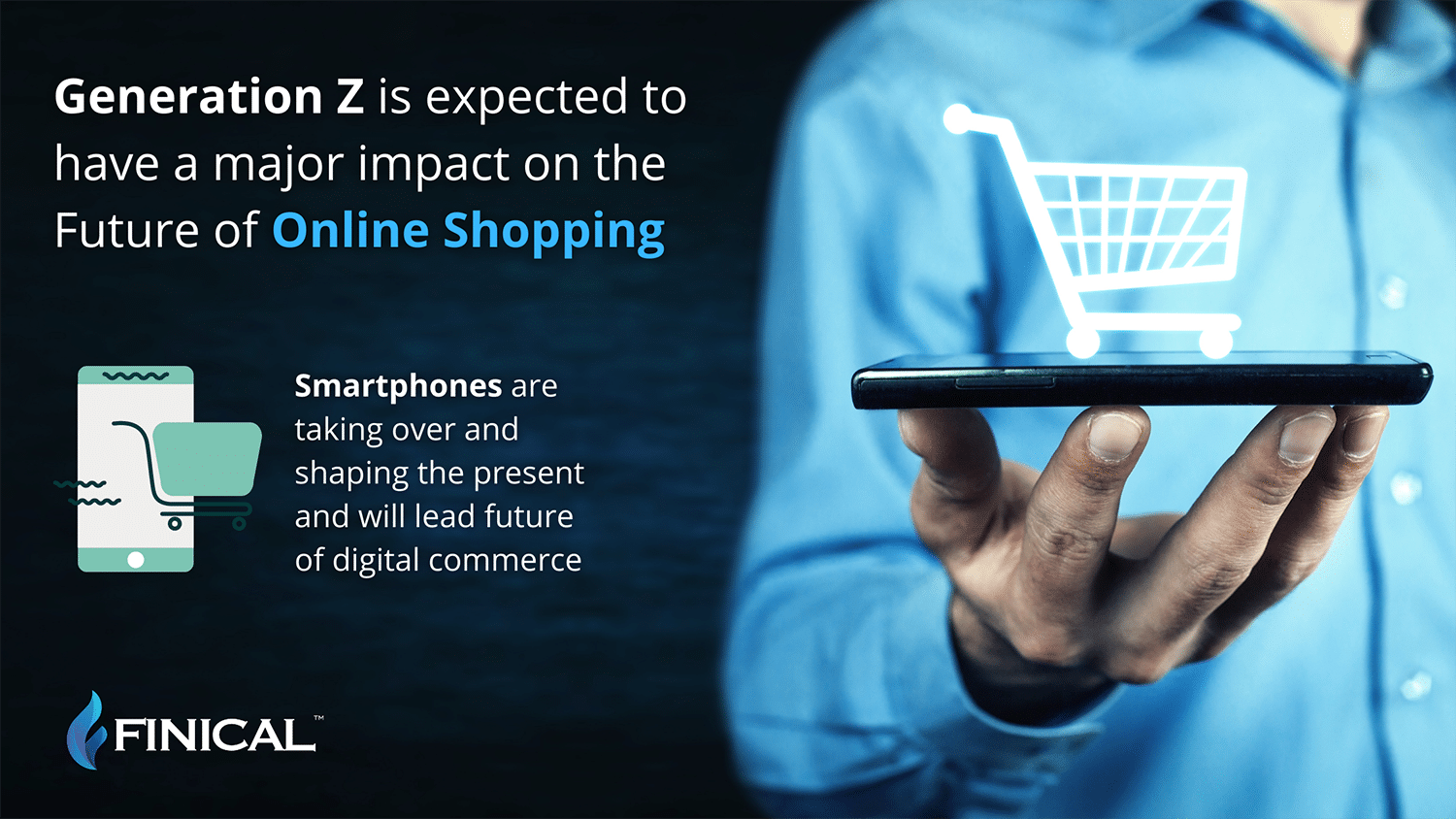
Generation Z, the generation born between 1996 and 2010, is expected to have a major impact on the retail industry. It’s estimated that this generation will grow to represent 40% of all consumer shopping with roughly $44 billion in buying power.
Retailers seeking to target this demographic will need to adapt their current practices to the digital generation, pursuing omnichannel marketing that takes full advantage of social media platforms to advertise products and entice potential buyers.
With the retail market already saturated with online retailers, businesses will need to work hard to ensure a frictionless customer experience. Offering smooth checkout processes and multiple payment options can promote increased sales, while also helping to retain more customers.
Even brick-and-mortar businesses should be aware that their customers have probably spent some time comparing prices and features online before coming to a store. This shows the importance of providing up-to-date information and product descriptions on your company’s website.
The future of retail belongs to the businesses that are willing and able to adapt. Just as the mail-order catalogs once shaped the future of American commerce, online shopping will continue to influence the way consumers shop, spend, and even interact with brands.
Equipped with this data, we hope that you and your business can continue to meet the evolving demands of the digital marketplace.
Data Sources
Adobe Analytics (2021) – Adobe Digital Economy Index.
Business Insider (2020) – These at-home fitness apps are seeing a surge as gyms close.
Capita Translation and Interpreting (2021) – It pays to know your customer – Online payment methods.
CCBill (2021) – Preferred Payment Method for Online Shoppers.
Coupon Follow (2019) – The Millennial Shopping Report.
Digital Marketing Community (2018) – Desktops Laptops Are The Most Used Devices by Digital Buyers in Holidays for Making Online Purchases at a Rate of 79%.
FastCompany.com (2021) – Who is Generation Z and What Do They Want?
GeekWire (2020) – COVID-19 crisis sparks ‘inflection point’ for online grocery—and huge revenue for Amazon.
Google Insights (2021) – Consumer Trends.
Insider Intelligence (2021) – Ecommerce statistics: Industry Benchmarks and Growth.
Insider Intelligence (2020) – How Interested are U.S. Adults in Social Media Shopping.
Marist University (2018) – Marist Poll on Digital Economy.
New York Times (2020) – Gaps in Amazon’s Response as Virus Spreads to More Than 50 Warehouses.
Oberlo.com (2021) – 10 Online Shopping Statistics You Need to Know in 2021.
Pew Research Center (2021) – About three-in-ten adults say they are ‘almost constantly’ online.
Statista.com (2021) – Number of digital buyers worldwide from 2014 to 2021.
Statista.com (2021) – Number of digital buyers in the United States from 2017 to 2045.
Statista.com (2021) – Retail ecommerce sales in the United States from 2017 to 2025.
Statista.com (2021) – Share of consumers using Amazon Grocery in the United States from January 2020 to January 2021.
Statista.com (2021) – Distribution of digital buyers in the United States as of February 2020, by age group.
U.S. Census Bureau (2021) – Quarterly Retail E-Commerce Sales.
Worldometers (2021) – Current world population.

